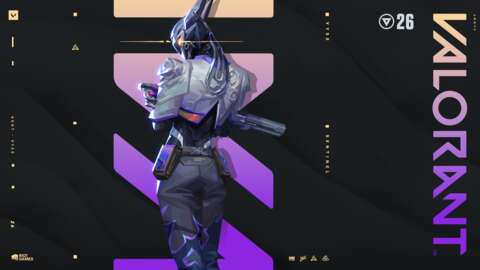At a glance, you’d be forgiven for thinking that The Legend of Zelda: Echoes of Wisdom follows firmly in the footsteps of the 2019 remake of Link’s Awakening. Stick Zelda in as a playable character, give her a magic wand, sell an absolute shed-load of copies. Job done.
But having now played an 80-minute section from early in the game, this comparison seems only surface-deep. Although it shares the extremely cute, diorama-esque aesthetic of its top-down predecessor, Echoes captures much more of the systemic and improvisational joys of Breath of the Wild and Tears of the Kingdom than you might expect.
Echoes sees Hyrule beset by mysterious Rifts–purple, vaguely Calamity-looking voids that stretch across the world–that have hoovered up anyone and anything unfortunate enough to be caught in their path. For once, this means the Hero of Hyrule is nowhere to be seen, leaving Princess Zelda to take up the rei(g)ns instead for the first time in the franchise proper. Sentenced to death by an imposter version of the King, the demo picked up with Zelda making her escape from the dungeons below Hyrule Castle.
Helping the plucky Princess is Tri, a fairy who gifts her with the Tri Rod, a magical wand that allows Zelda to create the titular Echoes–copies of, well, pretty much anything, from beds to clay pots all the way up to ax-wielding Darknuts and Keeses.
In fact, every monster I encountered in the demo could be copied once defeated, from spear-wielding Moblins to those shifty-looking Sea Urchins, enabling Zelda to call upon them in combat later. In a nice touch, Echoes cribs the gallery-style weapon menu from Breath of the Wild, making selecting the right tool for the job an absolute breeze and keeping combat feeling wonderfully fluid.
Echoes of enemies are just the tip of the iceberg, however, as the real anarchic joy comes from creating echoes of items–basically any item aside from consumables, by the looks of it–for combat, traversal, or puzzle-solving.
An early part of the demo saw Zelda use Echoes of items to sneak through a room full of guards, trapping them behind boxes, summoning noisy pots to distract them, or building bridges from copies of beds. Though this area was very proscriptive, as soon as Zelda enters Hyrule the potential scope of the Echoes mechanic quickly becomes apparent, as you learn Echoes of just about anything you choose, from boulders to torches to even chunks of meat. Summoning Echoes in the wider world seems to be limited only by Tri’s power (which expands with game progression) and the variable cost of the Echoes you’re summoning, allowing for flexible and rewarding puzzle-solving opportunities.
This all combines with a surprisingly robust physics and systems engine to allow for a joyous number of possibilities; wood floats on water and burns in fire; fire spreads across grass and sets enemies alight, who set others alight in turn; rocks, tables, and beds can be piled on top of each other to create stairways; and trampolines can be used to access rooftops or hidden nooks. Echoes of monsters even prove useful in exploration, with Strandtula’s webs providing a vertical climbing rope to reach areas that proved out of reach of even the most ambitious of my rickety constructions.
It’s clear that this is where the heart and soul of the game lies: Echoes of Wisdom appears to revel in enabling and encouraging player experimentation and improvisation, particularly as Tri’s summoning power refills instantly, allowing you to strike and rework your Echoes to your heart’s content. It all has more than just a hint of the imaginative problem-solving of Tears of the Kingdom’s Ultrahand system, shrunk down to a diorama scale.
Zelda is finally leading a game in the series that’s named after her!
Zelda does have access to other Tri powers beyond Echoes. With Bind, Zelda can make objects or monsters follow her own movements, while Reverse Bond enables the opposite, allowing Zelda to float across gaps beneath moving platforms or follow a spider’s vertical movements to climb cliff sides.
These powers feel akin to any number of the traditional abilities familiar to Zelda players, but the real joy once again comes from finding ingenious ways to make them interact with Echoes and the environment–holding a fiery Ignizol at a distance to set things ablaze, for example. As you might expect, a combination of powers and Echoes can be used to solve the usual suite of Zelda puzzles–place a statue onto a switch and a door opens, etc.–and once again the game’s systems seem robust enough to allow multiple solutions for most problems.
Toward the end of the demo, I got to play through an interesting encounter with a corrupted version of Link himself. Not quite Dark Link, but clearly not in his right mind. Defeating him blessed Zelda with another new power: the ability to temporarily transform into Swordfighter Form–a Zelda/Link hybrid complete with sword, shield, and spin attack. Using this form consumes an energy bar and prohibits Zelda’s normal actions such as creating Echoes, meaning it is by no means a permanent state.
As with every other system in the game, Swordfighter Form interacts brilliantly with other mechanics. A boss fight with a Seismic Talus at the end of the dungeon required using a combination of Swordfighter Form, summoned Echoes, and Binding the Talus’ core, resulting in an exhilarating and intuitive dance between different mechanics to succeed.
The result is that Echoes of Wisdom feels much more like a mini Tears of the Kingdom than I had expected–there’s even a smoothie-making crafting mechanic akin to cooking–and so far the game appears to do a fantastic job of transporting its player-driven problem solving into the beautiful tilt-shift world of top-down Zelda games. Far from simply reworking Link’s Awakening, Echoes of Wisdom seems to give Zelda an adventure all of her own.
The Legend of Zelda: Echoes of Wisdom launches for Nintendo Switch on September 26.




